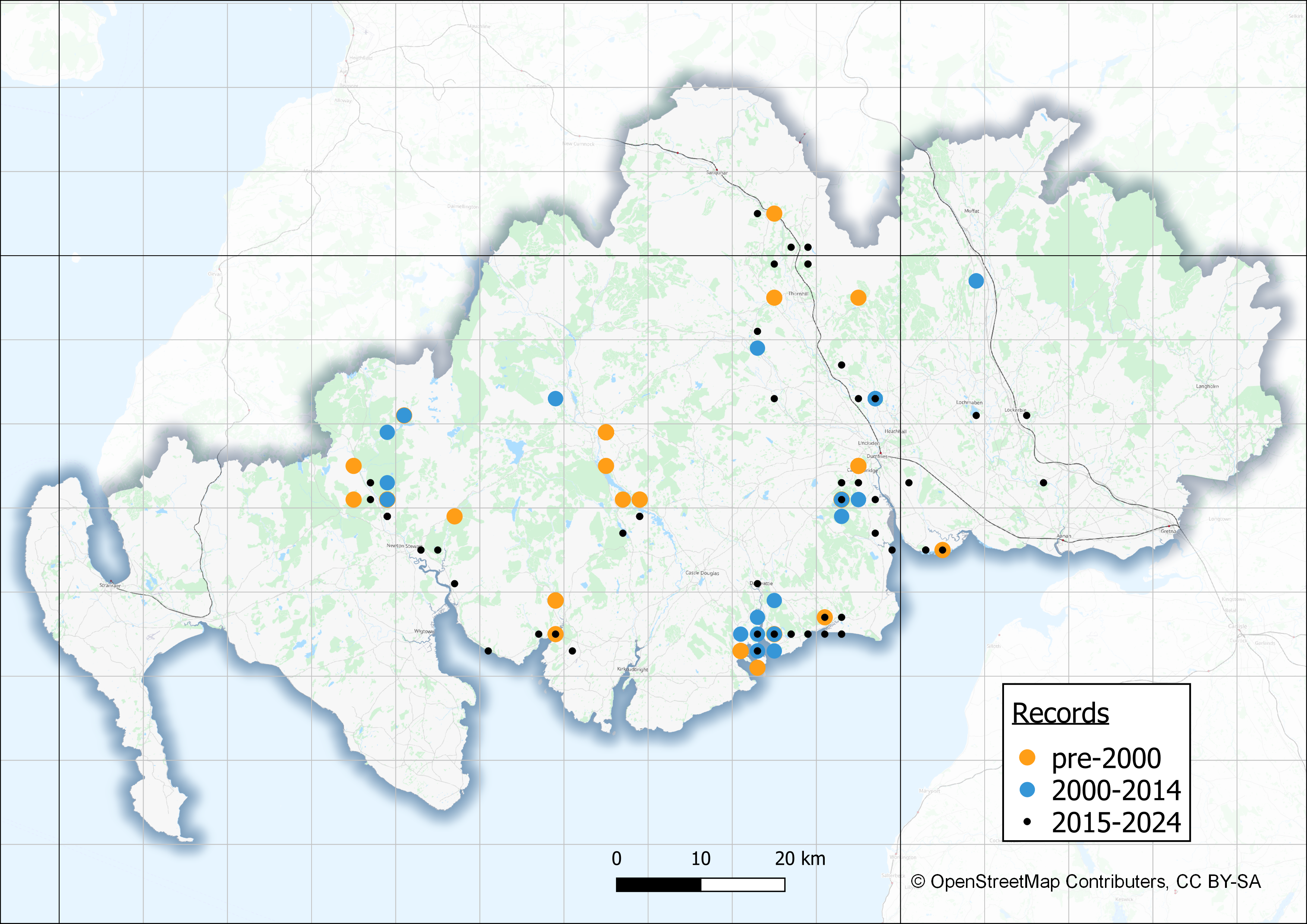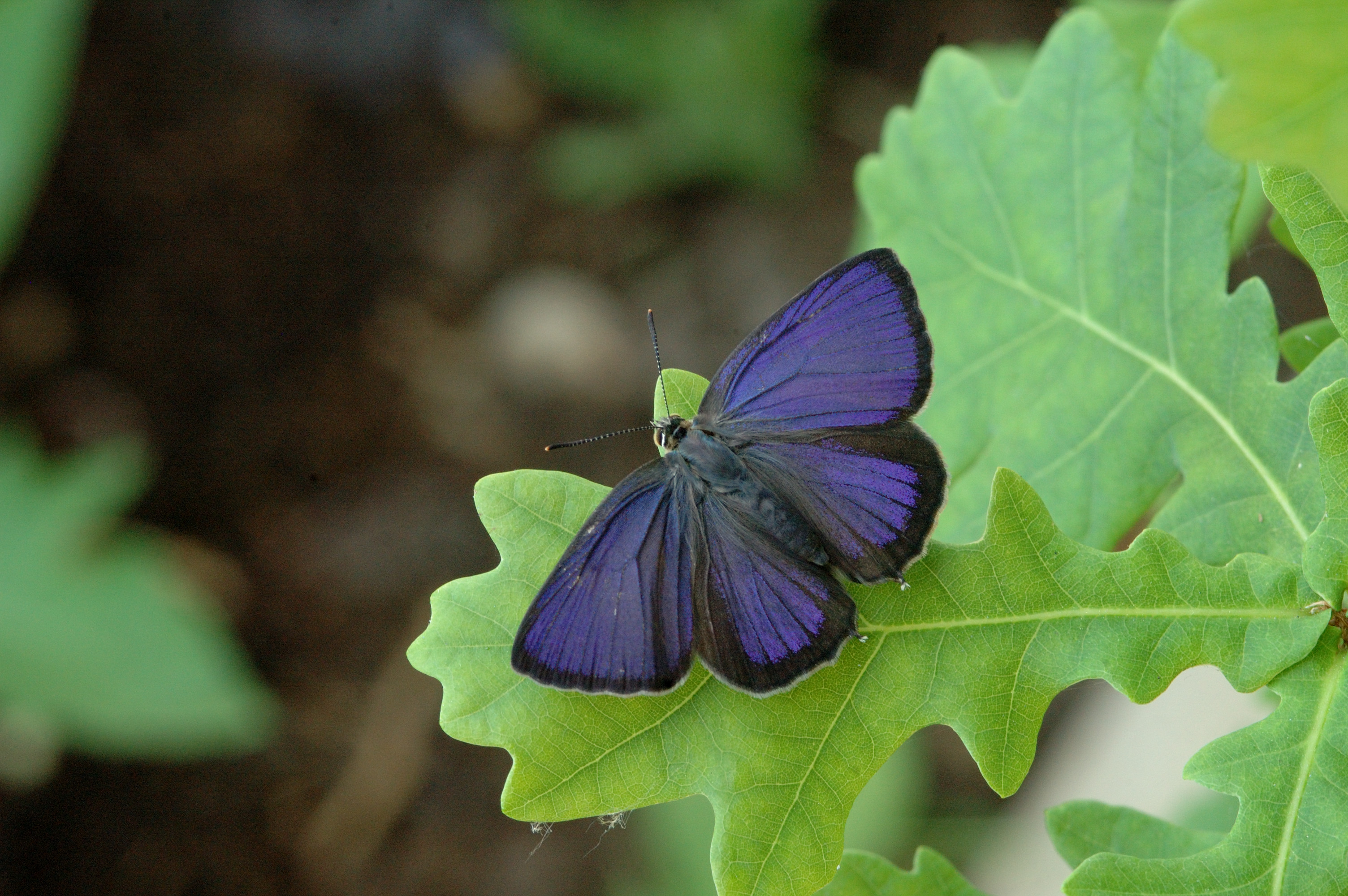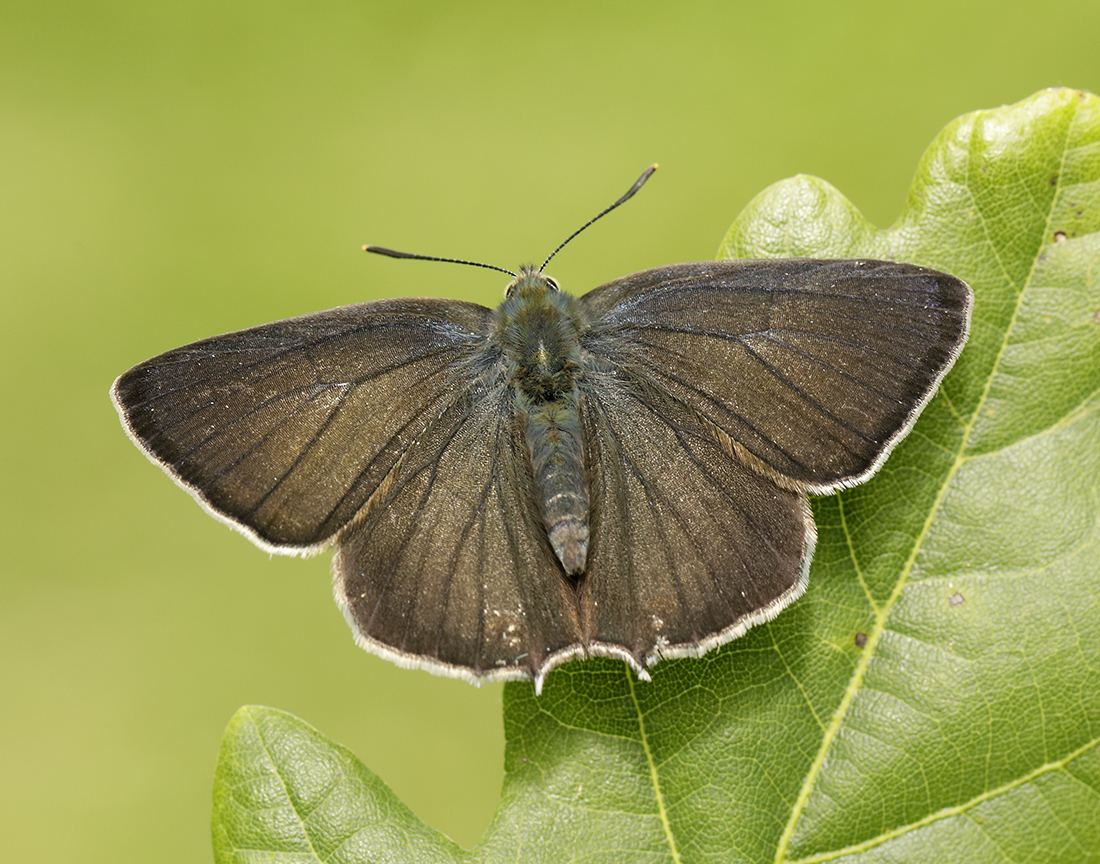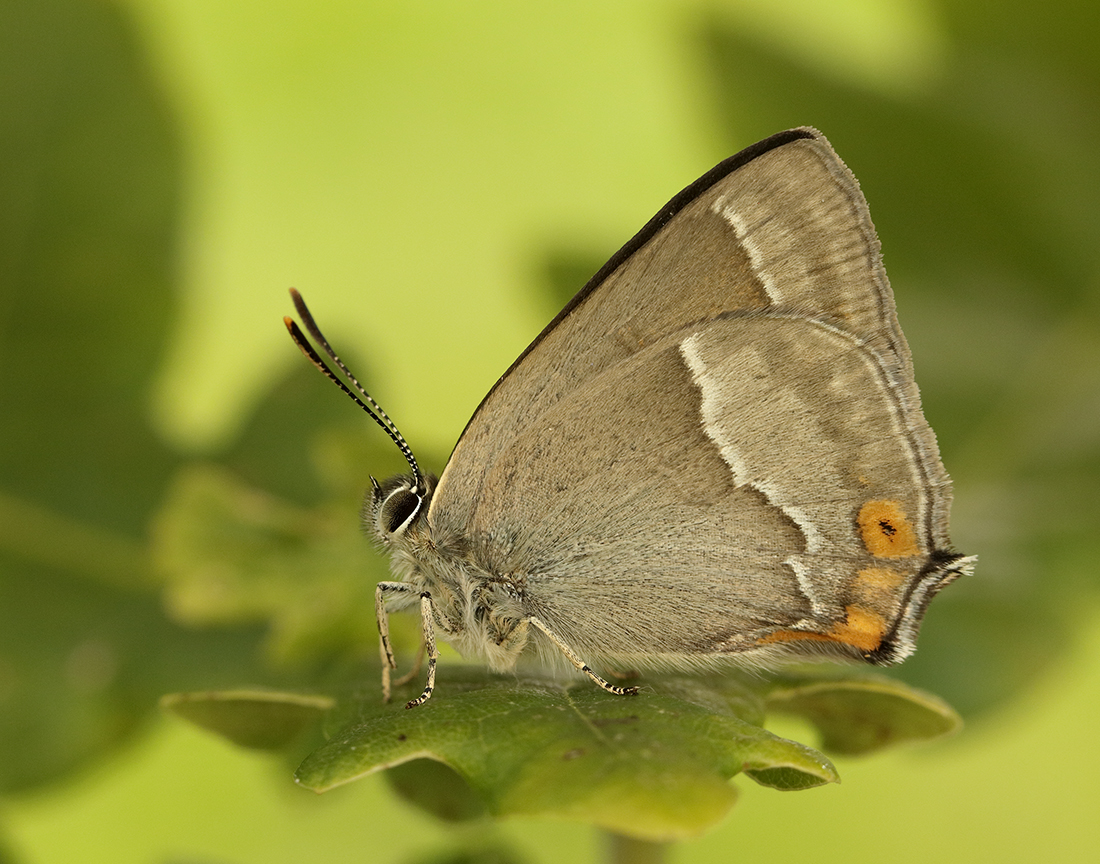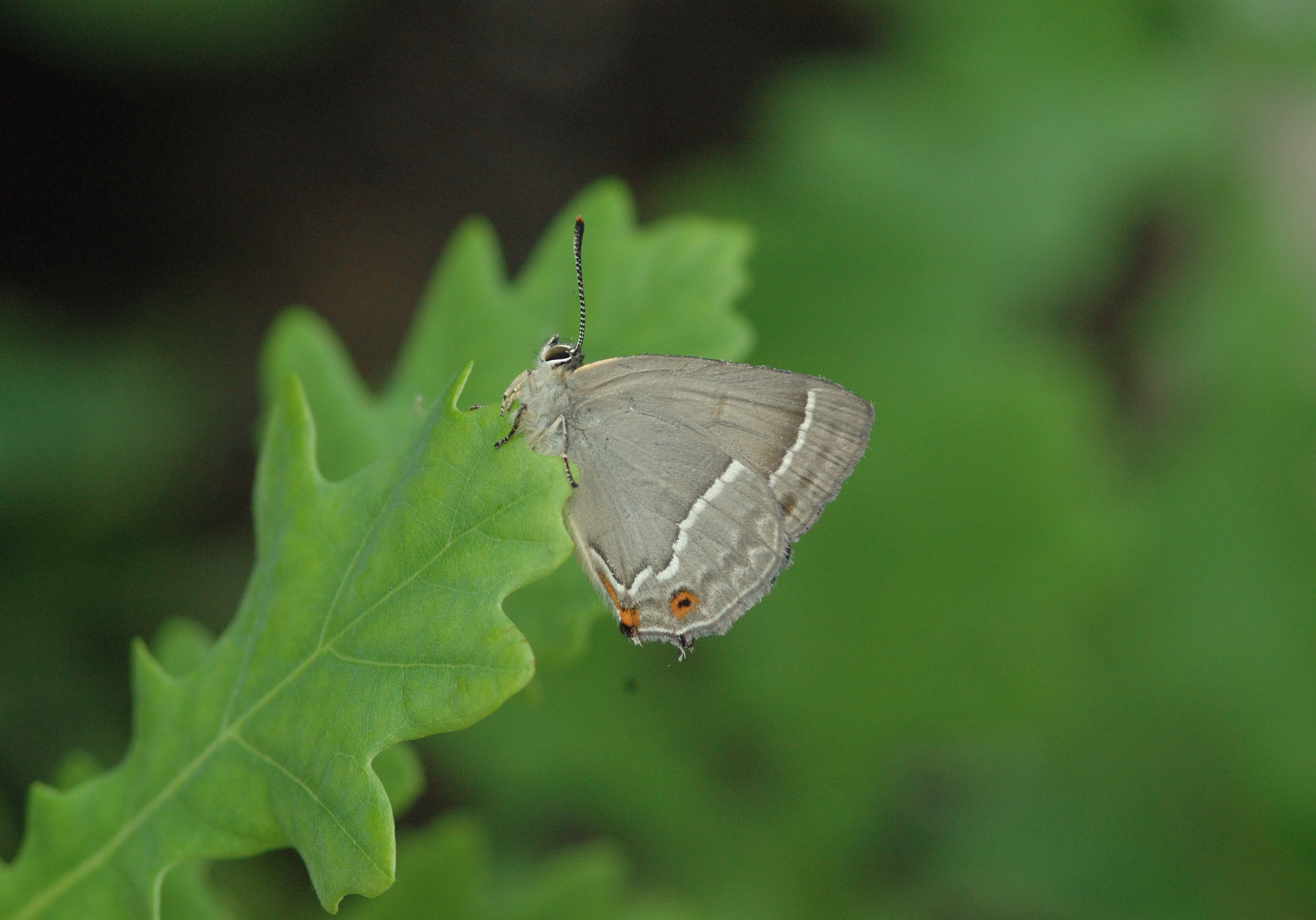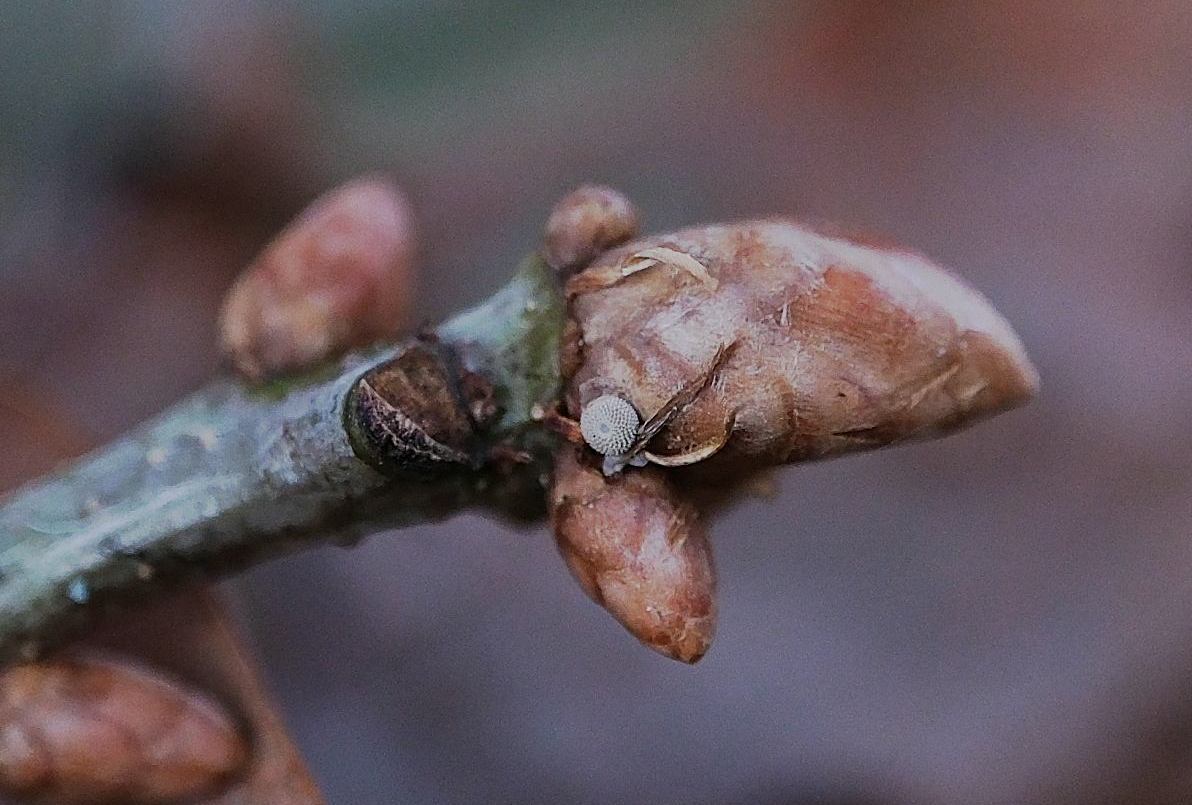Due to its habits the butterfly is probably our most under-recorded butterfly and thus the distribution and population trends of the Purple Hairstreak are poorly known.
Identification
This little insect is seldom seen, and rarely in close-up when its amazing purple iridescence makes it unmistakable amongst British butterflies. The Purple Hairstreak spends most of its adult life flying around the canopy of mature trees, and most people’s views are of small dark silhouettes flitting about high over open oak woodland or solitary oaks. The adults are best looked for following warm summer days in late afternoon and early evening by scanning the tops of the Oak trees with binoculars.
The undersides of the wings are equally attractive, being a pale grey with orange spots, but when flying at eye-level they can appear silver. As in some of the other Hairstreaks the hind wings have small ‘tails’ that resemble antennae and serve to confuse predators.
Life cycle & flight period
One generation a year, the adults peaking in mid/late July. Overwinters as an egg attached to oak leaf buds.
Larval foodplant
Sessile and Pedunculate Oak.
Habitats
This tree canopy-dwelling butterfly is hard to study. The adults spend most of their lives feeding on honeydew produced by aphids at the tops of Oaks, Ash and Elm. Oak trees within woodland seem to be rarely used and most sightings are from Oaks on the south-facing edges of woodland, or from large isolated trees, either in hedgerows or on farmland. Occasionally one can find rather sad specimens in puddles under oaks after a heavy summer storm.
Sometimes, on hot afternoons, perhaps when their canopy nectar sources have dried up, the adults fly down to feed on Bramble, Hemp-agrimony and thistles. The females will also fly down to lay their eggs, which they do at the base of oak buds, usually on south-facing branches. These eggs are quite conspicuous and provide a very useful means of detecting Purple Hairstreak colonies. Having grown to full size on oak leaves the caterpillars crawl down to earth and pupate in the soil. It seems likely that there is a close association with ants as pupae have been found in ants’ nests.

